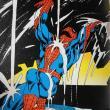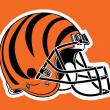How To Price Raw Books?14568
Pages:
1
 I don't believe this....and I know you don't care that I don't believe this. I don't believe this....and I know you don't care that I don't believe this.
|
GAC private msg quote post Address this user | |
| With books being as hot and volatile as they are, Overstreet can't really be used. eBay can be an option but its not without its inconsistencies and inaccuracies. Is there a way to simplify the raw book pricing using slabbed sales prices? If a seller grades a raw book at 7.0, declares no resto, no trimming and the buyer completely agrees with that assessment can we say that book should be priced at 65%, 75% etc. (or any other %) of its slabbed sales priced counterpart? Is this a viable and fair way (when both parties are in agreement on the grade of the book) to price raws? |
||
| Post 1 • IP flag post | ||
 I have a problem with fattening women up. I have a problem with fattening women up.
|
Bronte private msg quote post Address this user | |
| In my opinion, it is a case by case basis. I have bought a raw or 2 at a fairly high price because I was pretty sure it would grade high. The fact that it was a popular book made tbe book harder to negotiate down. | ||
| Post 2 • IP flag post | ||
 Collector Collector
|
Briten private msg quote post Address this user | |
| If I were selling I would deduct the cost of a potential grading, slab and ship expense from a posted value like go collect. Then I would consider the grade and factor in a variance based on grade error. So if I think it is a 7 I would price it as a 6.5 less the cost of grading fees. | ||
| Post 3 • IP flag post | ||
 Collector Collector
|
doog private msg quote post Address this user | |
| I use EBay recent sales and assign my own grade to every raw book I list. My grade could be a full grade low or high though. If I compare what I think my grade opinion is to a graded book, I deduct $25 from the sales price of the graded book to price my raw one. My problem is books with no comps,an example I have a Blue Bolt vol 1 #7 I will want to sell someday, but without comps, it’s pretty hard. I choose not to do auctions. |
||
| Post 4 • IP flag post | ||
 I don't believe this....and I know you don't care that I don't believe this. I don't believe this....and I know you don't care that I don't believe this.
|
GAC private msg quote post Address this user | |
Quote:Originally Posted by Bronte I figured this might be an answer...on a case by case basis. I was hoping for a broad stroke solution but maybe it doesn't exist. Let's frame this a different way. We can quantify the cost of grading, pressing, shipping etc. We know these values. If you have a slabbed book valued at $1000 and we know it costs $30 to Grade, $20 to Press, $50 to ship both ways, $5 in shipping materials, $15 for your time and effort totalling $120. Would a raw book sell for $880 compared to its slabbed $1000 book? I don't think it would. There's something else eating into the raw pricing....maybe I'm wrong and the raw would sell for $880. |
||
| Post 5 • IP flag post | ||
 Collector Collector
|
Haljordanfan private msg quote post Address this user | |
| I was recently offered $11,000 cash for a book. I declined as I’m a bit of a gambler and sent it to get graded. Cash in had would’ve been cool and if I go the EBay route I have to basically give up 14% plus the $500 grading fee and freight fees etc.. Guess we’ll find out shortly if it pays off or if I should’ve taken the cash. There’s a lot of different things to factor if you’re a flipper/collector or both. |
||
| Post 6 • IP flag post | ||
 I hold the record for itchy trigger finger. I hold the record for itchy trigger finger.
|
sportshort private msg quote post Address this user | |
| It's a crap shoot. I've seen raws that were graded by the seller sell for more than the a slabbed copy with the same grade! why not just buy the slabbed one when you start getting close to the slabbed comic's price? what the...? | ||
| Post 7 • IP flag post | ||
 If the viagra is working you should be well over a 9.8. If the viagra is working you should be well over a 9.8.
|
xkonk private msg quote post Address this user | |
| I don't really factor the cost of grading into the value of a book. I see plenty of eBay listings that must because they ask at least $70 for something encased in plastic. The thing is not an important or notable book in any way, but I guess it's worth $70 because they went through the trouble to send it in? I personally hope that they don't sell. To answer the question more directly, I value raw books pretty much the same as slabbed. About the only exception is high-grade or high-value books, where grading does add value in terms of condition certainty. Even then, if the pictures on a raw book are good enough that I feel comfortable with its condition, then I value it at pretty much slabbed price. |
||
| Post 8 • IP flag post | ||
 It's like the Roach Motel for comic collectors. It's like the Roach Motel for comic collectors.
|
chester15 private msg quote post Address this user | |
Quote:Originally Posted by xkonk This. ^^^^^ The "bird in hand" is the graded copy. You are gambling that the "same grade raw" will attain that grade. This is why there is a substantial premium for graded books. There could be hidden defects on a raw copy, "creative photography", mold on the pages, lots of possibilities. Another reason is the resto check. You can look at all the photos you want on a raw book and get a restored book. Or coupons clipped, or married pages, or loose centerfold, etc. Quote: Originally Posted by GAC I use a similar formula to work down to the raw price. I take all the grading costs you mention (except time), and then add another 50%-100% of that to it. The added part is for the time and trouble, and mostly for the risk. It will vary from 50% for a sought-after comic to 100% for a more common piece. If the raw price is just the graded price minus the grading costs, there is little reason to buy the raw. It's like the difference of buying a finished product for X dollars, vs. something you have to assemble for the same X dollars. Why wouldn't you just buy the finished one? And in the case of graded comics, it's in your hands many, many months earlier if already slabbed. If you plan to sell it, a graded comic is on the market immediately. The raw will take a lot of time, tying up your funds, lost opportunities. That could be the biggest expense, not being able to keep your money working. And recent auction prices factor into the raw value, if available. If there is a lot of data, that could be the prevailing source of the raw value. A formula is good, but raw data showing what people are willing to pay, or NOT pay, is the best opinion. |
||
| Post 9 • IP flag post | ||
 Masculinity takes a holiday. Masculinity takes a holiday.
|
EbayMafia private msg quote post Address this user | |
Quote:Originally Posted by chester15 The fact that we search slabbed selling prices in order to price our raws is evidence that grading is quite important and valuable. Anyone who doesn't think so should try searching only raw sold prices and see what they come up with. |
||
| Post 10 • IP flag post | ||
 I'm waiting.... (tapping fingers). I'm waiting.... (tapping fingers).Splotches is gettin old! |
Nuffsaid111 private msg quote post Address this user | |
| I'm kinda simplistic in my methodology. I look at closed auctions for raw books with various defects. Then I look at my book and its defects. And go upwards or downwards from there. If I see a comic with very with similar defects, I usually list mine for around the price the equivalent just sold for. |
||
| Post 11 • IP flag post | ||
 I don't believe this....and I know you don't care that I don't believe this. I don't believe this....and I know you don't care that I don't believe this.
|
GAC private msg quote post Address this user | |
Quote:Originally Posted by EbayMafia Is the value of a raw book simply the difference in the costs associated with slabbing? It doesn't seem to be. I want to try and quantify that difference. |
||
| Post 12 • IP flag post | ||
 It's like the Roach Motel for comic collectors. It's like the Roach Motel for comic collectors.
|
chester15 private msg quote post Address this user | |
Quote:Originally Posted by GAC It should never be just the difference in grading costs, as I explained earlier. If given that choice of already slabbed, or "some assembly required", arriving at the same price total, you would go with the slabbed copy. There has to be something in it for the prospective buyer when considering raw pricing, to cover their time, lost opportunity costs, and general risk. That's why I add that hefty % of the grading costs, to cover the risk and make the raw purchase worthwhile. And figuring the same when selling the raw copy. One exception could be if it is being sold by someone you trust, who grades accurately or even strictly, and who will stand by the product sold. Another exception is that you think the comic could be improved by cleaning and pressing to achieve a higher grade than a comparable slabbed copy being offered. But now we are not comparing apples to apples. For eBay fixed price listings, you price the raw comic to the best of your ability. You might start out at the high end of your estimate range. It's more conventional to drop the price a bit as needed, not so much to raise it. |
||
| Post 13 • IP flag post | ||
 Masculinity takes a holiday. Masculinity takes a holiday.
|
EbayMafia private msg quote post Address this user | |
| @GAC It's not a set percentage and it's not a straight line pattern. If I could draw a Decision Box for how much premium a slab would command, it might look something like this. The percentages are made up, but this is the range I think it would be in: --------------------Lower Value------Medium Value----High Value Lower Grade-------------10%--------------50%------------100% Medium Grade-----------15%--------------25%-------------75% 9.6 Grade----------------200%-----------100%---------100% I haven't spent a lot of time thinking these numbers through, anyone who wants to play with them feel free. But I think the added value of slabbing varies greatly by book value and by condition range. |
||
| Post 14 • IP flag post | ||
 Masculinity takes a holiday. Masculinity takes a holiday.
|
EbayMafia private msg quote post Address this user | |
Quote:Originally Posted by chester15 @chester15 If anyone can actually decipher my Decision Box I think I am saying the same as you. Buying slabbed is basically buying insurance for the most part. Just as Flood Insurance premiums would be more in a high-flood area, Slabbed premiums will cost more in the high-risk areas. Low value and low grade has low risk. Mid value and mid grade is fairly low risk. High stated grade and high FMV can change the risk significantly so the premium is higher. |
||
| Post 15 • IP flag post | ||
 Collector Collector
|
Darkseid_of_town private msg quote post Address this user | |
| Two dimensional thinking here .....sometimes and for the right buyer the raw book is worth a premium over the slab. Consider the person who wants to be able to view the story and art rather than have a slabbed book that is rather pointless in that regard. Also the person who likes to work from the raw, and then get their own hand work in for pressing or cleaning, and have it slabbed where they choose.... So sometimes for the right buyer a raw book is easily worth the same price as a slab, alot depends on your audience and purpose in buying. |
||
| Post 16 • IP flag post | ||
 It's like the Roach Motel for comic collectors. It's like the Roach Motel for comic collectors.
|
chester15 private msg quote post Address this user | |
| @GAC By the way, cool avatar. | ||
| Post 17 • IP flag post | ||
 Masculinity takes a holiday. Masculinity takes a holiday.
|
EbayMafia private msg quote post Address this user | |
Quote:Originally Posted by Darkseid_of_town Since a slab can easily be cracked, I would think there would still be value in the restoration check and the 3rd party recognition of the books condition. The interior inspection would also have value for remote purchases. 3PG is information and assurance, both of those would still have value in these situations. |
||
| Post 18 • IP flag post | ||
 Collector Collector
|
Darkseid_of_town private msg quote post Address this user | |
| yes, hence why I said, different audiences price books differently to purchase...some like the grading and so forth whereas others want a lose book to examine. | ||
| Post 19 • IP flag post | ||
 Beaten by boat oars Beaten by boat oars
|
Studley_Dudley private msg quote post Address this user | |
| I don't assign numeric grades to raw books. I assign the grade GD, VF, NM-, NM, etc. I also don't assign NM+ or Mint to any raw books. I don't factor in the buyer's potential grading costs, pressing, cleaning, shipping to and from pressers/grading company. No. If I was going to do that, I may as well use Mile High's website as a way to price my raw books. I use sold listings for similar condition copies, and come to a realistic price when figuring the average sales. Everyone does it different, so more to power to you if your chosen way works for you. | ||
| Post 20 • IP flag post | ||
Pages:
1This topic is archived. Start new topic?
